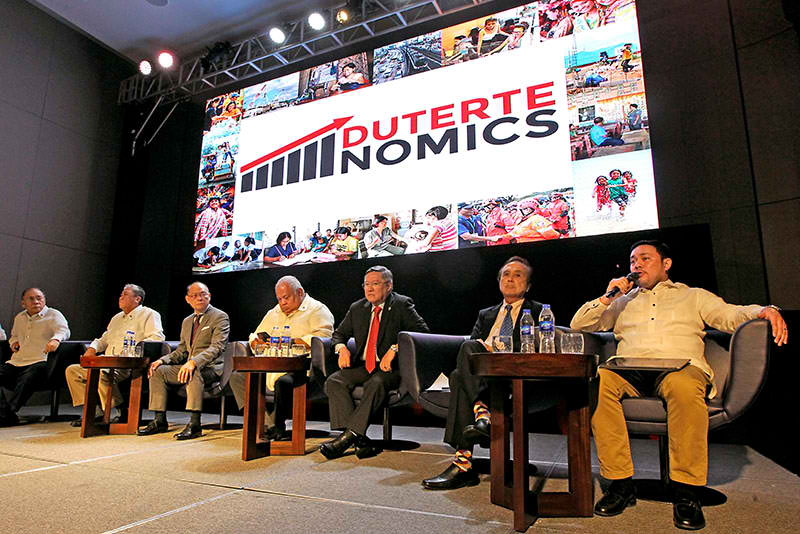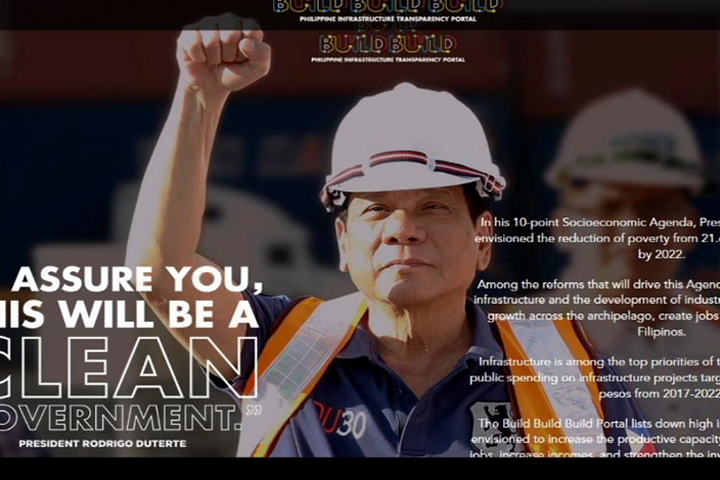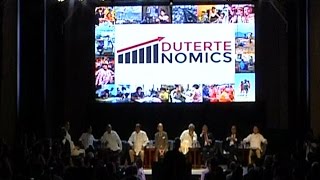Dutertenomics: Economic Banner of Duterte Administration
The Philippine Government’s economic managers launched this month (Apri18th) Duterte Administration’s banner flag, known as “Dutertenomics”, a platform for the country’s economic growth and development, taking into account its socioeconomic 10-point agenda. As Secretary Benjamin Diokno of Dept. of Budget and Management (DBM) mentioned, the Government took an ambitious economic plans and programs as it would require roughly P8.4 Trillion (or $172 Billion) in a span of 6 years, ramping up Government’s infrastructure expenditures, vis-a-vis previous administrations’ infra-related projects.
Under Dutertenomics, the following major national infrastructure projects (mainly focusing on transportation and social infrastructure projects) are envisioned to sustain Philippine’s economic growth:
-
Mega-Manila Subway – This project would be the first subway in the Philippines. First Phase would amount to P227 million, funding of which will be sourced from Official Development Assistance (ODA) and General Appropriations Act (GAA). It starts in 4rth quarter of 2020 and ends in the 2nd quarter of 2024. Upon completion, travel time from Manila to Taguig will be only 31-minutes long and 350,000 passengers are projected to use this mass transportation daily. Contract will be signed between the Philippine and Japan Govt.
-
Leyte Tide Embankment Program – A disaster resiliency project which is scheduled to be completed in 2022, hopefully to address disaster related requirements.
-
First Railway Project in Mindanao
-
Water Resources Development Project
-
Information Communication Technology (ICT) Projects
-
Energy/Power Projects
-
Administrative Building Projects
-
More bridges across Pasig River,
-
Development of Clark Green City (Clark International Airport, Clark-Subic Rail, Tutuban-Clark Rail, etc. to attract businesses and people out of the Mega Manila area; and
-
Other Projects (e.g. Metro Manila Bus Transit, North South Railway Project connecting Tutuban, Calamba, Batangas and Bicol, Panguil Bay Bridge, Kaliwa Dam and Chico River Dam. etc.)
Note that Dutertenomics’ infrastructure program is not only geared towards the metropolis but also in the countryside so as to help improve local economy. Likewise, it includes the present Administration’s thrust on good governance, enhanced fiscal policies, and an upgraded social services to accelerate growth and transform the Philippines into a high middle-income economy. Said blue print is meant to improve the status of the country in comparison with its ASEAN neighbors and to benefit ultimately the Filipino people in terms of poverty reduction, employment, and efficient services.
How does Dutertenomics differ from the former Administration’s “Aquinomics”? Aquinomics had the same keystone, it was also anchored on good governance. On the other hand, it dreamed about the Philippines becoming a true “Asia’s Rising Star” and transforming the country into an “Island of Excellence”. Aquinomics had four pillars such as macroeconomic stability, investment in people (e.g. CCTs, etc.), public private partnerships in some of its major public utilities and infrastructure building (e.g. schools, etc.). However, the underspending of the former Administration and the country’s lackluster economic performance during that time, failed Aquinomics. Construction of key infrastructure projects which includes airports, roads, bridges and schools were delayed/not undertaken as priority had been diverted to basic governance checks. As a result, “Aquinomics” benefits were hardly felt by majority of Filipinos as reflected in a survey conducted by one of the poll/survey agencies.
Since Dutertenomics is still in its infant stage, the big difference between Dutertenomics and the Aquinomics at the outset would be on the political willingness of the present Administration to quickly implement the projects included in the pipeline. Dutertenomics is determined to conduct an aggressive campaign of BUILD, BUILD, BUILD – that is, fast-track the building of needed infrastructure, from bidding out of the projects up to groundbreaking and actual construction. Secretary Carlos Dominguez stated: They will “no longer tolerate wishy-washy promises that implementing agencies have been accustomed to making in the past”.
Dutertenomics which is labeled as “Golden Age of Infrastructure” coincides with one of the thrusts of NEDA’s Philippine Development Plan which is to accelerate strategic infrastructure development towards a growing and thriving economy. Said infrastructure development is an essential variable to stimulate the country’s economic growth and development.
Note: A forum on the subject was held by the Government in coordination with the Department of Finance (DOF), the Presidential Communications Operations Office (PCOO), in cooperation with the Center for Strategy, Enterprise & Intelligence (CenSEI) on 18th of April 2017, at Conrad Manila in Pasay City, with the country’s economic managers and stakeholders.
cto for featured photos


